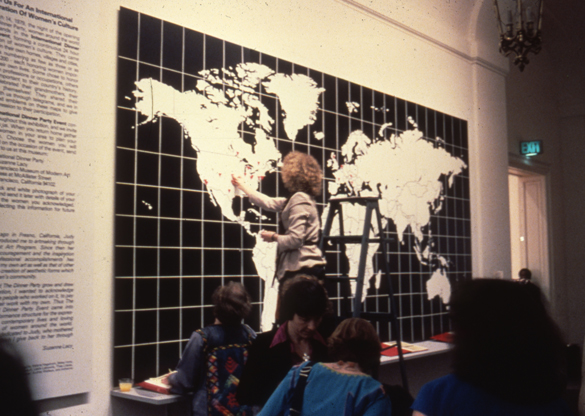The Legacy of Suzanne Lacy

Feast artist Suzanne Lacy is known for engaging in projects that challenge traditional lines of division between artist and audience as well as traditional notions of artistic production and display. Lacy's lesser-known, The International Dinner Party (1979), is a perfect example of such a project. In The International Dinner Party performance, Lacy united feminist culture workers around the globe by inviting them to stage dinners that paid tribute to a particular woman in each group. By focusing on the convivial gathering as a site of strengthening personal bonds, Lacy exploded the locality and individual ownership of her creation--engaging about 2,000 women through 200 dinners that took place across Africa, Asia, Europe and North and South America during a 24-hour period. Lacy believes that projects like The International Dinner Party have the potential to transform rigid notions of art and artist because they encourage "a more subtle and challenging criticism in which assumptions--both those of the critic and those of the artists--are examined and grounded within the worlds of both art and social discourse."
Read more about The International Dinner Party and the legacy of Suzanne Lacy in Stephanie Smith's essay, "Mapping the Terrain, Again," which appeared in the Summer 2011 issue of Afterall.
Image: Documentation of Suzanne Lacy's The International Dinner Party performance, San Francisco Museum of Modern Art, 1979.